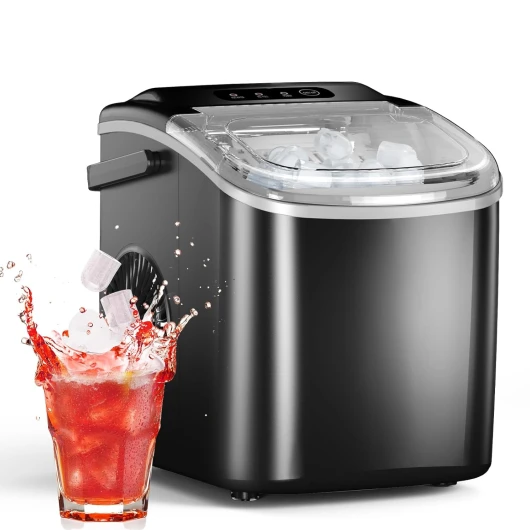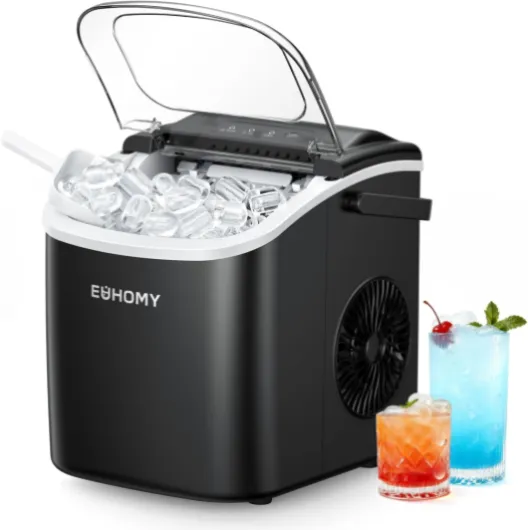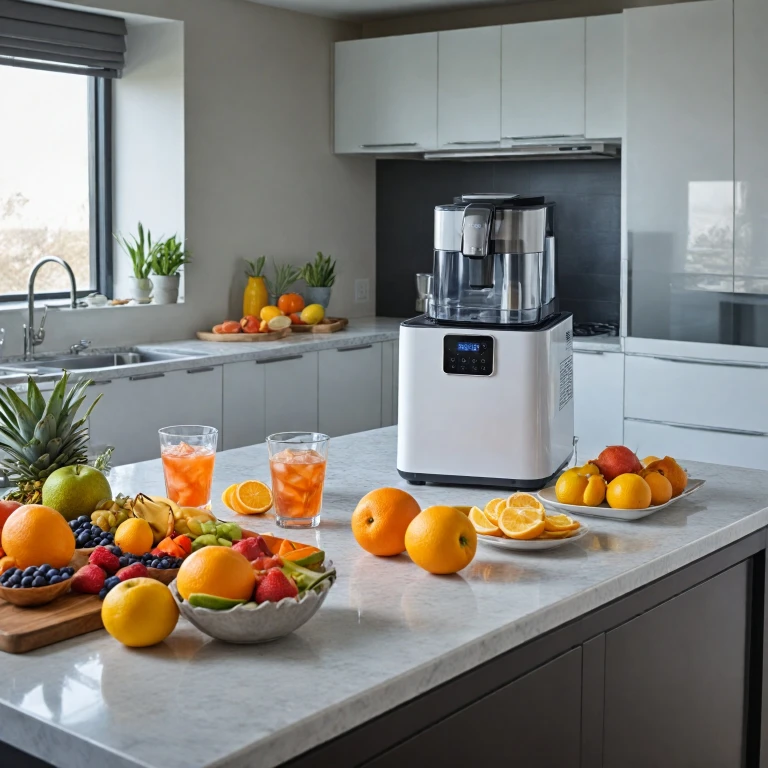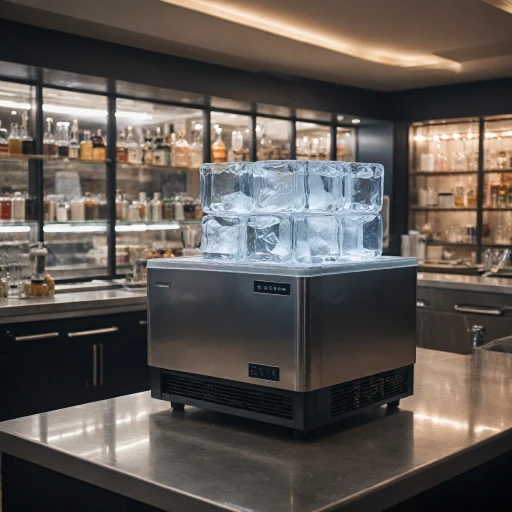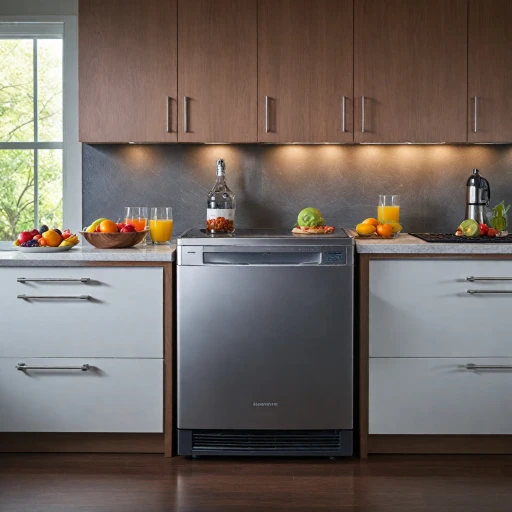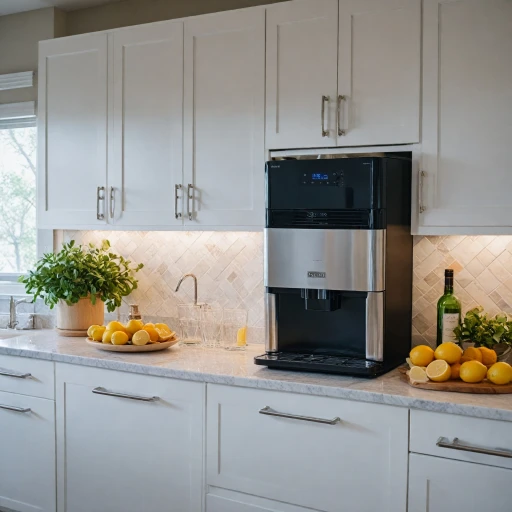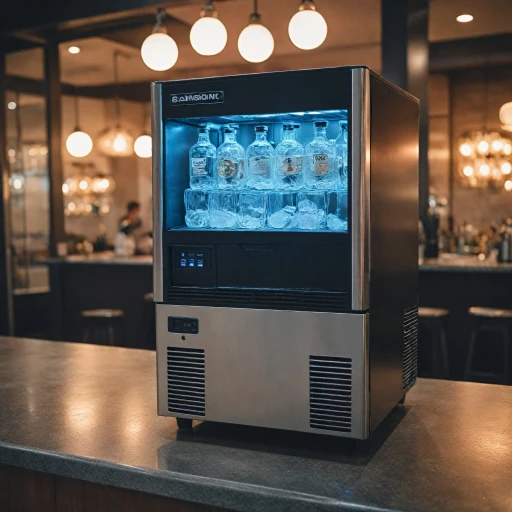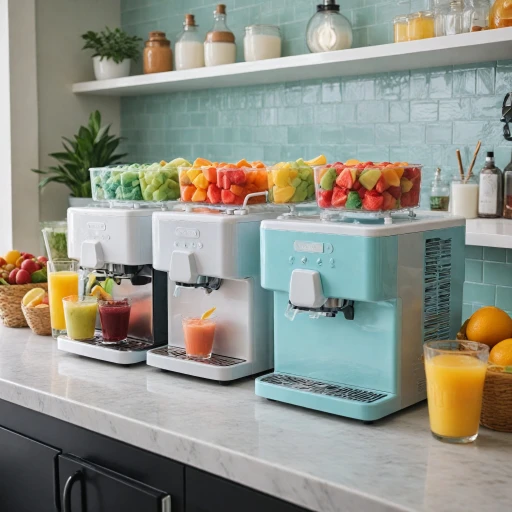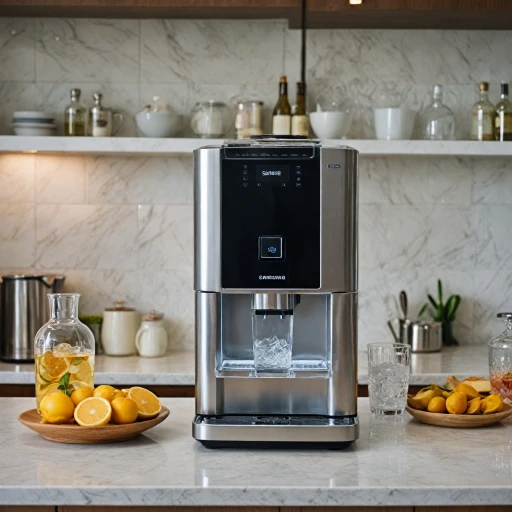
Understanding When to Replace Your Ice Maker
Signs It's Time to Replace Your Ice Maker
The signs indicating that it might be time to replace your ice maker can be subtle or obvious, but recognizing them early can prevent inconvenience later. Here are some key indicators:- Lack of Ice Production: If your ice maker isn't producing enough ice cubes or has stopped making ice altogether, it may be an issue with the water inlet valve or other maker parts that need replacing. Sometimes, it's easier to consider a full maker replacement.
- Old Age: Typically, the lifespan of ice makers is around 5 to 10 years. If your unit is nearing this age, frequent repairs might indicate that a new model is a worthwhile investment.
- High Maintenance Costs: If you find yourself regularly buying replacement parts or paying for repairs, it might be more cost-effective to invest in a new ice maker, which could also come with improved efficiency and features.
- Excessive Noise: Unusual noises from the ice maker, such as grinding or clicking, could signify worn-out components like the maker's motor or wiring harness, indicating it's time for a change.
- Poor Ice Quality: If your ice cubes are cloudy or off-tasting, it may be due to a failing water filter system. While replacing the filters could help, sometimes an outdated or defective unit won't suffice even with best-quality filters.
Considering Replacement Options
Determining that you need to replace your refrigerator ice maker is only the first step. You'll need to consider several factors to ensure that your new unit meets your needs and fits your refrigerator perfectly. Factors like compatibility with the current wiring harness or fit with the existing maker assembly should be evaluated. Additionally, some newer models include advanced features that might enhance your user experience, such as built-in water filtration systems or energy-efficient options. You can also explore large-capacity units if your ice demands have grown, exploring the largest ice machines for your needs can give you insights into your options. Ultimately, understanding when it's time to replace your ice maker helps you avoid potential issues, like running out of ice during a hot day or significant events. Ensuring your new door-compatible model fits seamlessly into your current refrigerator setup will maximize convenience and efficiency.Key Features to Look for in Replacement Ice Makers
Essential Qualities of a Worthy Ice Making Option
When replacing your ice maker, identifying the key features to look for can make all the difference in selecting a product that meets your specific needs. Whether you're sourcing a replacement for a standalone unit or a refrigerator model, here are crucial attributes to consider:- Capacity and Production Rate: It's vital to assess how much ice your household or business requires daily. If your usage is substantial, you might want to explore a large cube ice maker that offers high production rates.
- Space and Size Compatibility: Ensure the new ice maker fits the exact dimensions of the area where you'll be installing it, particularly if it will be within a refrigerator. Double-check the space for the ice maker assembly alongside checking doors and surrounding cabinets.
- Ease of Installation: Some ice makers come with a kit that simplifies the assembly. These kits usually include the necessary wiring harness, valve, and other parts to facilitate a smoother replacement process.
- Water Connection and Filters: A good ice maker requires efficient water inlet and an updated water filter system to maintain the quality of ice cubes. It’s crucial to find products that easily integrate existing parts such as the inlet valve and water filters.
- Energy Efficiency: Look for energy-efficient models to keep utility costs down without sacrificing performance. It can also be beneficial to ensure the model is equipped with air filters, as this can have an impact on the overall efficiency.
- Maintenance and Durability: Longevity is often a sign of quality in ice makers. Seek out units constructed with durable materials and accessible replacement parts. Products that offer remote controls for programming or dispensing functions could enhance user convenience, especially when trying to dispense ice effortlessly.
Comparing Different Types of Ice Makers
Evaluating Different Styles of Ice Machines
As you search for the perfect ice maker replacement, it's essential to evaluate the various types of ice makers available in the market. Whether you're upgrading your refrigerator ice maker or considering a stand-alone unit, understanding the differences can guide you to a well-informed decision.
- Built-in Ice Makers: Often found in premium kitchen setups, these ice makers are installed under your counter. Offering high capacity and sleek integration, they require water inlet and valve connections, similar to a dishwasher.
- Countertop Ice Makers: Perfect for smaller households or occasional use, countertop models are portable and require minimal space, making ice quickly with simple assembly and no need for complex installation.
- Refrigerator Ice Makers: Built into your refrigerator, these makers are straightforward in terms of replacement and installation. When upgrading, ensure you have compatible replacement parts, such as the maker kit, ice bucket, and wiring harness.
- Outdoor Ice Makers: Designed to withstand outdoor conditions with robust construction. Ideal if you need an ice maker for your patio or outdoor kitchen. They require specific air filters and additional protection for sudden weather changes. For more insights into choosing the right model for an outdoor setting, visit outdoor commercial ice machines.
By understanding these types, you can better assess which product will best fit your lifestyle and needs. Consider the space you have available and how often you'll be making ice. It's also worth noting that regular maintenance, such as checking water filters and door seals, can significantly extend the lifespan of any ice maker. Whether you're dealing with a whirlpool unit that dispenses ice through the door or a standalone maker, the right choice can make all the difference.
Installation Tips for Your New Ice Maker
Efficiently Setting Up Your New Ice Unit
Successfully installing your new ice maker involves several vital stages that ensure a smooth transition and functionality. Here’s a concise guide to help you through the installation process smoothly:- Check Compatibility and Gather Tools: Before beginning, verify that your new ice maker is compatible with your refrigerator model or standalone application. Gather the necessary installation tools and the ice maker assembly parts, including the wiring harness, maker kit, and replacement parts.
- Secure Water Supply: A reliable water inlet is essential for making ice effectively. Confirm that the water inlet valve is functioning and free from blockages. This guide on choosing an ice and water dispenser can be useful if you're considering upgrading your supplies.
- Installing and Connecting: Following the manufacturer’s instructions, install the maker assembly, ensuring all connections to the refrigerator ice system are secure. Attach the ice bucket at the appropriate location, and ensure correct placement of the air and water filters to prevent impurities.
- Adjust Settings and Test: Initial adjustments may be necessary, such as ensuring the ice makers are properly calibrated to dispense ice and ice cubes are formed correctly. Use the refrigerator’s control panel or remote controls for precise settings.
- Finalize and Optimize: Once the ice maker is operating, double-check the door seals and the assembly for any loose parts or leaks. Efficient maker won’t give you issues, but proper checks ensure longevity.
Maintenance Tips to Extend the Life of Your Ice Maker
Maintain Peak Performance
Performing regular maintenance on your ice maker ensures it runs efficiently and lasts longer. Consistently cleaning the ice maker's components such as the ice bucket, water filters, and air filters is crucial. Replacing the water filters as recommended by your appliance manufacturer helps maintain water quality and prevent mineral buildup.Keep Your Ice Maker Clean
Ensure the icemaker, including the ice maker assembly, remains free from mold and mildew by cleaning it at least twice a year. Use a solution of mild detergent and warm water to scrub the interior parts. Always unplug the maker kit and turn off the water supply before cleaning.Inspect Replacement Parts Regularly
Routine inspections for your ice maker parts help catch potential issues early. Key components to check include the water inlet valve, wiring harness, and the maker’s inlet water line. Replacing worn-out parts promptly, using a maker replacement kit, prevents further breakdowns.Optimize Ice Production
Pay attention to the air flow around your refrigerator ice maker to avoid overheating. Ensure there is sufficient space near the wall and door for proper ventilation. Stock the freezer appropriately to allow air to circulate. If your ice maker won’t dispense ice or is making ice at a reduced rate, verify that it’s not due to blocked parts or an improperly set temperature.Check for Firmware Updates
Some refrigerator models come with smart features, that can be fine-tuned using remote controls. Ensure the control components are up-to-date to maximize the product's performance. If necessary, consult your ice maker’s manual for instructions on applying firmware updates. Incorporating these maintenance practices will not only extend the life of your ice maker but also help you avoid costly repairs. Regular upkeep of your refrigerator's maker parts ensures you always have a steady supply of ice cubes on hand.Troubleshooting Common Ice Maker Problems
Resolving Common Issues with Your Ice Maker
Experiencing problems with your ice maker can be frustrating. Here are some common problems and how to address them:- Ice Maker Not Making Ice: Check the water supply line for any kinks or blockages that may prevent water from reaching the maker. Ensure that the water inlet valve is open and functioning properly. Additionally, inspect the ice maker assembly and wiring harness for any visible damage.
- Ice Maker Making Smaller Ice Cubes: If your refrigerator ice maker is producing smaller or irregular ice cubes, the water filters might need replacing. Clogged filters can restrict water flow. Consider replacing them with the appropriate maker replacement parts to restore optimal performance.
- Ice Maker Won't Dispense Ice: If your ice maker isn’t dispensing ice, check the ice bucket for any blockages that may be preventing ice from moving. Also, examine the door switch and ensure it is closing properly. Faulty switches might prevent the ice from dispensing.
- Leaking Water from Ice Maker: Leaks can occur if the water inlet valve is damaged or not sealed correctly. Inspect the valve and its connections, making necessary replacements to prevent further leaks.
- Unusual Noises from Ice Maker: If your ice maker is making unexpected noises, check for any loose parts or debris in the maker assembly. Regular maintenance and cleaning of components like air filters can help reduce noise levels and improve overall performance.
- Ice Maker Stuck in Cycle: Sometimes, ice makers can get stuck in a cycle due to a malfunctioning motor or control module. Reviewing the maker's manual can provide specific guidance on resetting the machine or replacing the necessary parts.
-logo-retina.jpg)

